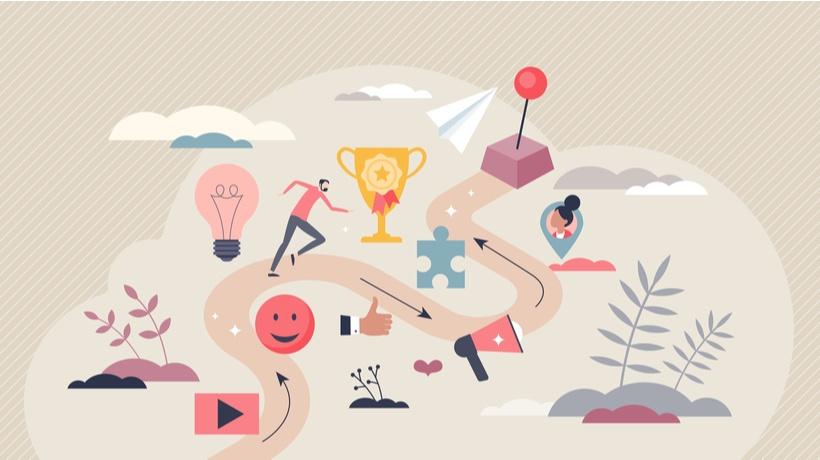The Future of Educational Gamification: Trends, Benefits, and Next-Generation Learning
In today’s fast-evolving digital landscape, educational gamification has emerged as a revolutionary approach to learning. As educators and learners seek engaging,effective techniques,the fusion of gaming principles and pedagogy is shaping the classroom of tomorrow. In this complete guide, we will explore the future of gamified education, highlighting prevailing trends, core benefits, practical tips, and what next-generation learning might look like.
What is Educational Gamification?
Gamification in education refers to the use of game design elements—such as points,leaderboards,badges,challenges,and storylines—in non-game learning environments. The goal is to enhance student engagement,motivation,and retention by making learning more interactive and rewarding.
Key Trends Shaping the Future of Educational Gamification
- Adaptive & Personalized Learning: Advanced AI-driven platforms adjust content and challenges based on learners’ strengths and weaknesses, creating a customized educational journey.
- Immersive Technologies: The integration of AR (Augmented Reality), VR (Virtual Reality), and MR (Mixed Reality) brings subjects to life, from historical re-enactments to scientific experiments.
- Data-Driven Insights: Real-time analytics help educators track progress, identify gaps, and further tailor gamified modules for optimal outcomes.
- Collaborative Gamification: Multiplayer and team-based challenges foster peer interaction,communication,and cooperative problem solving.
- Mobile-First Experiences: App-based learning lets users game and learn anytime, anywhere, promoting continuous engagement and microlearning.
- storytelling & Narrative-Based Learning: Compelling plots and character development make lessons relatable, memorable, and emotionally engaging.
- Edutainment & Gameful Assessment: Blending entertainment with education, quizzes and exams become less intimidating and more enjoyable, reducing test anxiety.
Benefits of Educational Gamification
Adopting gamification in education yields a multitude of advantages for students, teachers, and institutions alike:
- Boosted Motivation: Earning rewards and progressing through levels ignites intrinsic motivation and persistence.
- Enhanced Retention: interactive learning aids memory recall and submission of knowledge in real-world scenarios.
- Instant Feedback: Immediate responses help students learn from mistakes, fostering a growth mindset.
- Improved Collaboration: Team quests and group tasks teach communication, leadership, and social skills.
- Personalized Pacing: Learners advance at their own speed, ensuring comprehensive understanding before moving forward.
- Safe failure: Low-stakes environments empower learners to take risks, learn from setbacks, and build resilience.
- Increased Accessibility: Adaptive platforms support diverse learning styles and abilities, promoting inclusivity.
Next-Generation Learning: What’s on the Horizon?
As we look towards the future, next-generation learning environments will be defined by:
- Hyper-Personalization: Leveraging AI and big data, future platforms will deliver uniquely tailored experiences that adapt in real-time to student needs.
- Augmented Social Learning: Gamified social platforms will foster peer mentoring and global classroom connections,breaking geographical barriers.
- Integration with Real-World Skills: Simulations, role-playing, and project-based learning will bridge the gap between theory and practical application, preparing learners for future careers.
- Seamless Edtech Ecosystems: Unified systems will allow for easy integration of gamified content across platforms—LMS (Learning Management Systems), mobile apps, and customary curricula.
- Gamified Credentialing & Micro-Certifications: Progress can be formally recognized through badges and digital credentials,supporting lifelong learning and microlearning pathways.
Real-World Case Studies: Gamification at Work
Kahoot! – Making Assessment fun
Kahoot!, a globally lauded quiz platform, transforms classroom quizzes into interactive competitions. With real-time results, leaderboards, and collaborative play, it has boosted participation, especially in remote and hybrid settings.
Duolingo – Reinventing Language Learning
the Duolingo app employs streaks, XP points, and playful challenges to help millions master new languages. The gamified structure increases daily engagement and sustains motivation, proving the effectiveness of bite-sized, gameful learning.
Classcraft – Roleplay in the Classroom
Classcraft turns everyday classroom management into a fantasy adventure. Students choose roles, earn powers by completing coursework, and collaborate to solve in-game challenges, driving engagement and positive behaviour.
Practical tips for Implementing Educational Gamification
To successfully integrate gamification into learning environments, consider these best practices:
- Define Clear Learning Objectives: Align game mechanics with academic goals to ensure meaningful engagement.
- Start Simple: Begin with basic quizzes or point systems before advancing to complex game narratives or tech integration.
- Pace the Progression: Gradually increase difficulty and unlock new challenges to maintain interest without overwhelming learners.
- Foster Collaboration: Design activities that encourage teamwork and shared achievements.
- Encourage Reflection: Provide opportunities for students to reflect on their progress, strategies, and learning outcomes.
For educators just starting with gamification, tools like Kahoot!, Quizizz, and Classcraft are highly recommended for their user-friendly interfaces and proven classroom impact.
Overcoming Challenges in Educational Gamification
While the benefits of gamified learning are considerable, implementation does come with potential obstacles:
- Resource Constraints: Not all institutions have access to the latest technology or high-speed internet.
- Excessive Competition: Overemphasis on leaderboards can demotivate some students; balance is crucial.
- design Complexity: poorly designed games may distract from curriculum objectives or fail to deliver educational value.
- Equity & Inclusivity: Gamification platforms must cater to diverse learning needs and abilities.
Addressing these challenges requires thoughtful instructional design, ongoing feedback, and a commitment to inclusivity.
Conclusion: Gamification and the Evolution of Learning
The future of educational gamification is radiant, promising, and transformative. By harnessing game mechanics, immersive technologies, and adaptive learning strategies, educators can unlock unparalleled levels of engagement and achievement. As we move forward, the focus should always remain on creating equitable, accessible, and meaningful learning experiences. Now is the perfect time for educators, institutions, and edtech innovators to embrace gamification and shape the next generation of inspired, lifelong learners.
Start your journey today—explore, experiment, and experience the dynamic world of gamified education.

